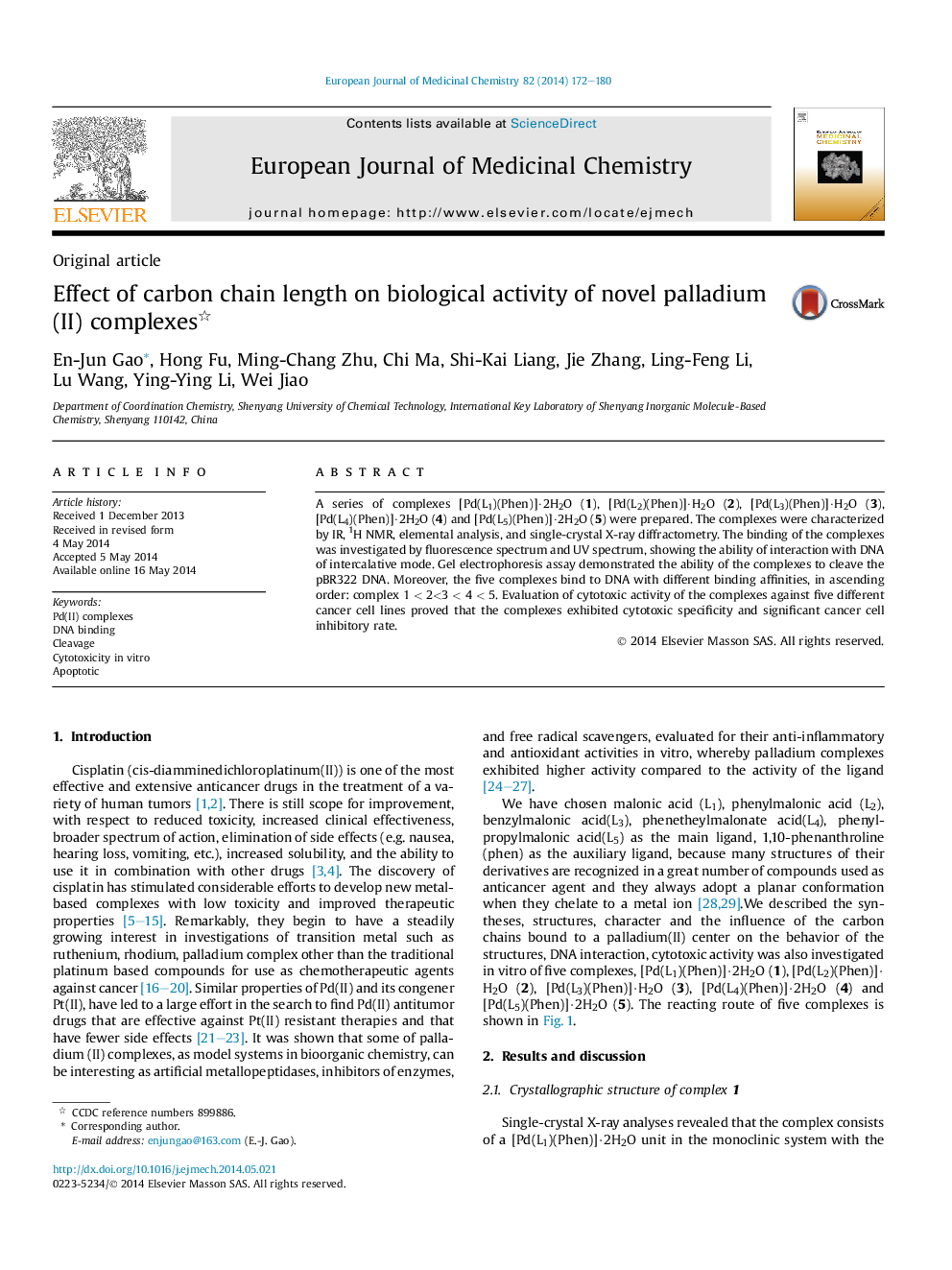| Article ID | Journal | Published Year | Pages | File Type |
|---|---|---|---|---|
| 1395724 | European Journal of Medicinal Chemistry | 2014 | 9 Pages |
•Pd(II) complexes with a benzenealkyl dicarboxlate chain have been prepared.•All complexes exhibit an efficient DNA cleavage.•The five complexes exhibit good cytotoxic activity against cell tested.•Apoptotic tests indicated the five complexes had an apoptotic effect.
A series of complexes [Pd(L1)(Phen)]·2H2O (1), [Pd(L2)(Phen)]·H2O (2), [Pd(L3)(Phen)]·H2O (3), [Pd(L4)(Phen)]·2H2O (4) and [Pd(L5)(Phen)]·2H2O (5) were prepared. The complexes were characterized by IR, 1H NMR, elemental analysis, and single-crystal X-ray diffractometry. The binding of the complexes was investigated by fluorescence spectrum and UV spectrum, showing the ability of interaction with DNA of intercalative mode. Gel electrophoresis assay demonstrated the ability of the complexes to cleave the pBR322 DNA. Moreover, the five complexes bind to DNA with different binding affinities, in ascending order: complex 1 < 2<3 < 4 < 5. Evaluation of cytotoxic activity of the complexes against five different cancer cell lines proved that the complexes exhibited cytotoxic specificity and significant cancer cell inhibitory rate.
Graphical abstractMorphological changes of HeLa cells. A: normal HeLa cells for 24 h; Pt: HeLa cells treated with cisplatin for 24 h; B: HeLa cells treated with complex 1 for 24 h; C: HeLa cells treated with complex 2 for 24 h; D: HeLa cells treated with complex 3 for 24 h; E: HeLa cells treated with complex 4 for 24 h; F: HeLa cells treated with complex 5 for 24 h.Figure optionsDownload full-size imageDownload as PowerPoint slide
